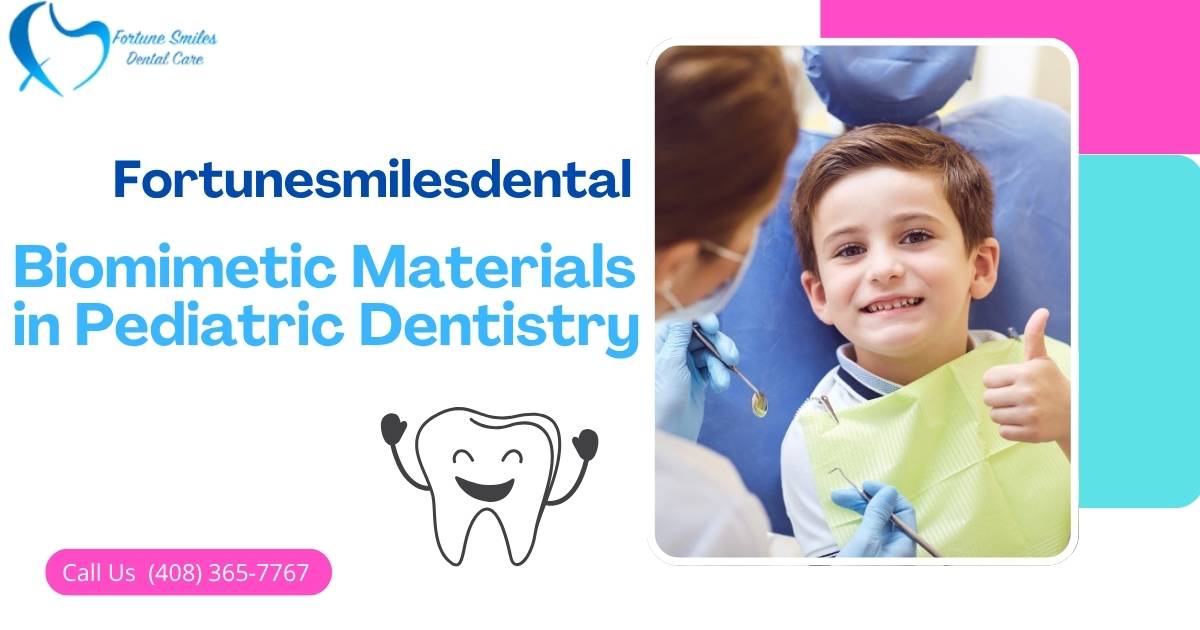Imagine a world where cavity treatment doesn’t just fill holes—it actually helps repair and strengthen teeth as they grow. It may sound futuristic, but thanks to biomimetic materials, it’s already here.
What Are Biomimetic Materials?
Biomimetic materials are designed to mimic natural tooth structure—enamel and dentin—in look, feel, and mechanical behavior. These advanced restorative options preserve much more of your child’s original tooth, support natural growth, and reduce the risk of future decay or fractures.
Unlike older approaches—like amalgam fillings or crowns—that remove healthy structure or simply cover it up, biomimetic materials bond chemically and physically to the existing tooth, restoring strength and resilience.
Why This Matters in Pediatric Dentistry
Children’s teeth are unique—still forming, thinner, and more sensitive. Using materials that work with nature is especially important in early childhood, when cavities are common and early intervention prevents long-term damage.
These materials allow gentle care through:
-
Minimally invasive techniques (like atraumatic restorative treatment, or ART) that avoid drills and preserve enamel
-
Adhesive tooth-colored restorations that protect against bacteria and support tooth growth
- Materials that release fluoride or calcium ions to aid in remineralization and reduce sensitivity (Wikipedia)
Common Biomimetic Materials Used in Kids’ Dentistry
| Material | Why It’s Biomimetic | Benefits for Children |
|---|---|---|
| Glass Ionomer Cement (GIC) | Bonds to dentin, matches thermal expansion, and releases fluoride | Minimally invasive, protects enamel, ideal for fillings and sealants |
| Resin-Modified GIC (RMGIC) | Combines strength and fluoride release with adhesive bonding | Gentle on sensitive teeth, strong seal against decay |
| Bulk-fill Composites | High-strength restoratives that can be placed quickly | Shorter appointment time, less chair anxiety |
| Self-assembling Peptides (e.g., P11-4) | Initiate enamel-like mineralization by mimicking natural scaffolding | Remineralizes early lesions without drilling |
| Silver Diamine Fluoride (SDF) | Antimicrobial and non-invasive arrest of early caries | Ideal for very young kids or anxious patients, no drilling needed |
Benefits: What Parents Should Know
-
Fewer visits, happier kids. Many biomimetic techniques like ART or peptide-based remineralization avoid drilling—and sometimes even anesthesia.
-
Long-lasting results with fewer replacements. Materials bond like natural tooth and remain sealed longer.
-
Natural aesthetics matter. Tooth-colored restorations and minimal invasiveness help build confidence during formative years.
-
Remineralization support. Some materials actively release protective minerals, helping to rebuild weakened enamel.
💬 Case Story:
one of our Little patients had early enamel spots on her molars. Rather than drilling, we applied a peptide-based treatment that encouraged natural mineral growth. Within weeks, the spots stabilized and began to harden—no needle, no filling, no fuss.
🦷 Give Your Child the Gift of a Stronger, Healthier Smile
Don’t wait for cavities to cause lasting damage. Our biomimetic dentistry treatments restore and protect your child’s teeth using nature-inspired materials and gentle techniques. Fewer drills, less discomfort, and longer-lasting results.
✅ Biomimetic Materials + Preventive Dentistry: A Perfect Match
Preventive dental care is all about catching early signs and taking action before serious damage occurs. Biomimetic materials fit beautifully into that philosophy by:
-
Treating early lesions before they become cavities
-
Using minimally invasive techniques suitable even for anxious or very young children
-
Reinforcing tooth structure instead of weakening it with excessive removal
Early detection and gentle restoration empower children to keep their natural smile intact—and they grow up without dental fear.
Tips for Parents at the Dental Clinic
• Ask if a restorative approach avoids drilling.
• Inquire about fluoride-releasing or peptide-based treatments.
• Choose clinics specializing in minimally invasive, child-centered care.
What the Science Says
-
Glass ionomer techniques and ART have shown high survival rates in primary teeth for up to 94% at 2-year follow‑up.
-
Self‑assembling peptide (P11‑4) applications have been shown to remineralize early lesions effectively—often outperforming fluoride alone.
-
Reviews highlight that biomimetic restorative protocols extend tooth vitality, reduce retreatment cycles, and avoid unnecessary extractions or crowns.
So What’s the Bottom Line?
With biomimetic materials, pediatric dentistry enters a new era—where natural repair, reduced anxiety, and long-term tooth health become the standard. These treatments empower children to start strong and stay healthy—literally from the inside out.
At FortuneSmile, we’re proud to integrate these innovations into every child’s treatment plan, because keeping natural teeth intact today protects confidence, health, and a lifetime of beautiful smiles.

